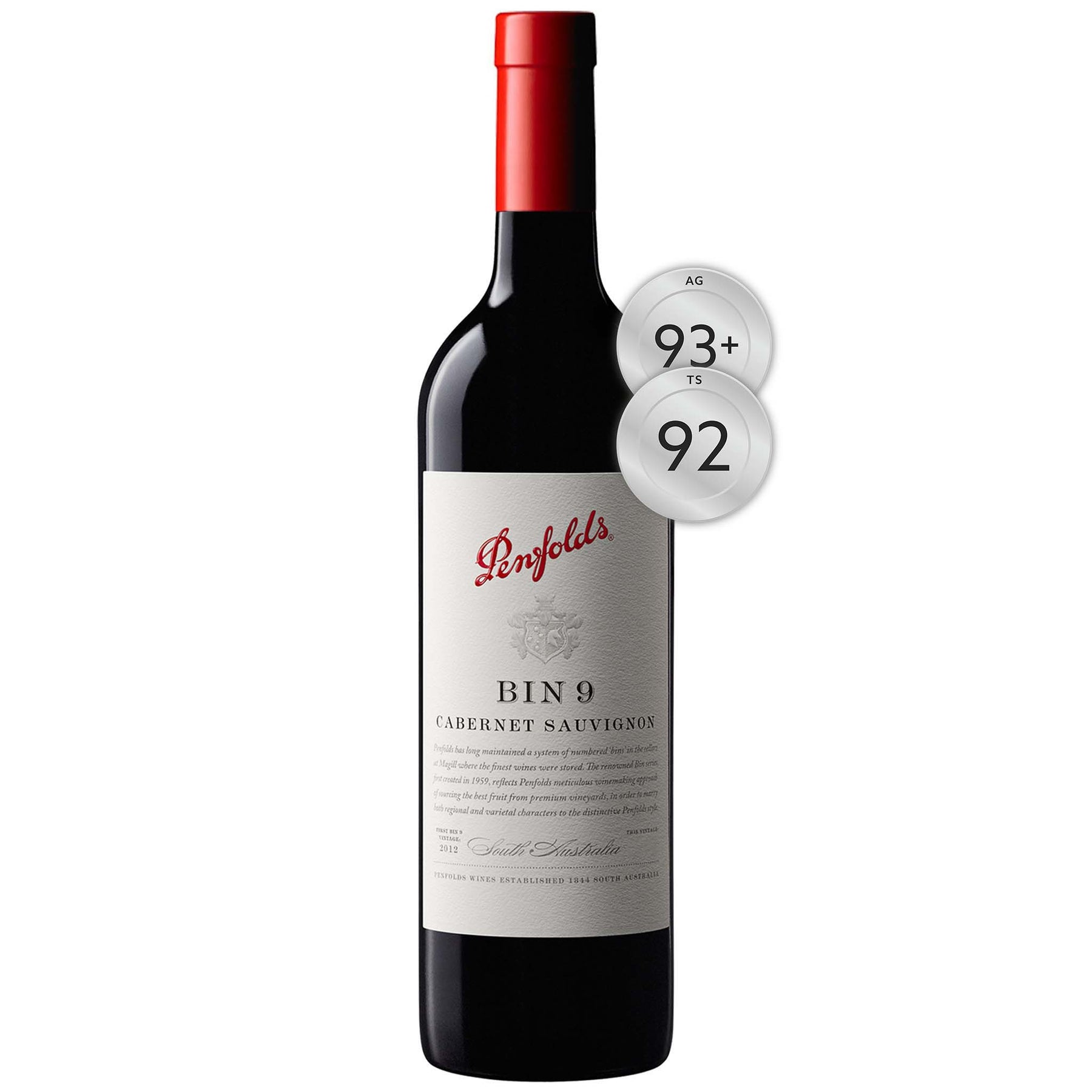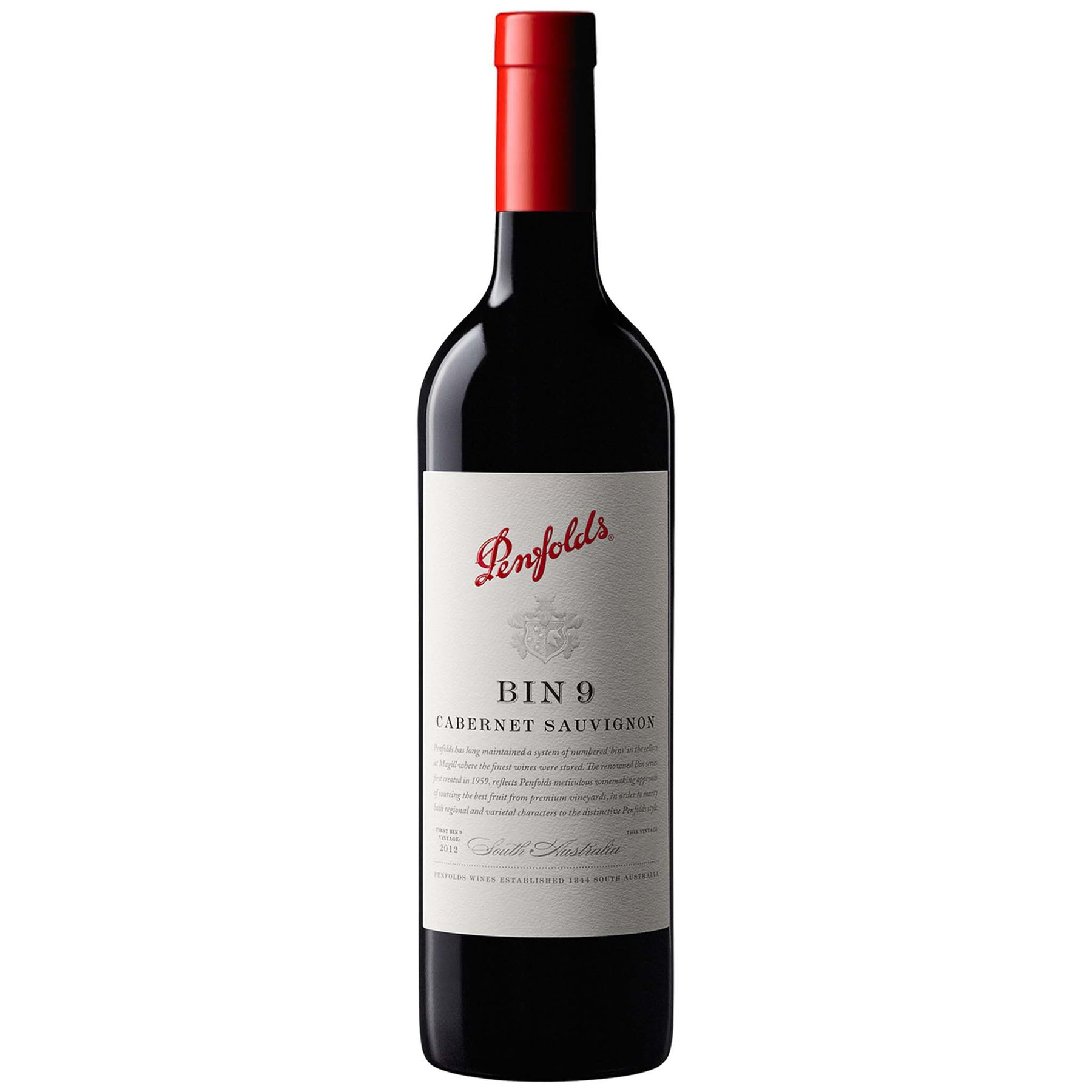

Penfolds Bin 9 Cabernet Sauvignon 2012
Style: Red Wine
Variety: Cabernet Sauvignon
Closure: Cork
Penfolds Bin 9 Cabernet Sauvignon 2012
Warehouse
34 Redland Drive
Vermont VIC 3133
Australia
Critic Score: 93
Alcohol: 14.5%
Size: 750 ml
Drink by: 2030
As a result of price rises to Bin 407 and Bin 707, Penfolds crafted a new Cabernet Sauvignon wine, designated Bin 9, that is half the price of the Bin 407. The first vintage was made at the Penfolds Nuriootpa winery in 2012. Adherent to Penfolds multi-regional philosophy, Bin 9 is sourced from vineyards across South Australia, with a significant portion sourced from the ancient soils of McLaren Vale.
"A brand new wine and looking pretty special. McLaren Vale Cabernet makes up a large proportion of this, which could probably explain the more generous fruit. Almost Shiraz like generosity until you get to the finish which is again tannic and almost surly in its tannic raw beefiness. But it looks more real and classic Australianate in its style with more basket pressed style soft tannins than the 407 - very Penfolds and very Oz. I like this and it is going to be an awfully nice old Penfolds red in the future." Andrew Graham
The 2012 Bin 9 Cabernet Sauvignon was sourced from vineyards in McLaren Vale, Langhorne Creek, Wrattonbully, Barossa, Padthaway, Barossa Valley and Coonawarra. The wine was matured for 12 months in French (12% new) and American oak (14% new) hogsheads
"Nose: Dark fruits including blackcurrant. Savoury green olive and roasted red peppers. Tomato leaf and oregano. Mixed spice, cedar and rosewood notes derived from oak.
Palate: Tightly structured and focused. Roasted meats, cured meats and spicy chorizo. Grainy and savoury tannin profile. Structured by classy French and American oak. Decanting will bring out more expressive notes. Peak Drinking: Now-2025." Penfolds
Expert reviews
"A brand new wine and looking pretty special. Lots of oak. Seasoned oak it may be but also obvious. Apparently Vale Cabernet makes up a large proportion of this, which could probably explain the more generous fruit. Almost Shiraz like generosity until you get to the finish which is again tannic and almost surly in its tannic raw beefiness. But it looks more real and classic Australianate in its style with more basket pressed style soft tannins than the 407 - very Penfolds and very Oz. I like this and it is going to be an awfully nice old Penfolds red in the future. You'd want to cellar it though. Ultimately this is half the price of the 2011 Bin 407 and I'd recommend this more. Drink 2015-2028+." Andrew Graham – 93+ points
"The new member of the Bin family, created to fill the gap as Bins 407 and 707 ascend into the price stratosphere. Blended from across South Australia, it's an elegant and bright style of lively poise, defined by varietal hallmarks of crunchy redcurrants, leaf and rose bud perfume. Tightly wound and ageworthy. Drink by 2022." Tyson Stelzer, Halliday Wine Companion - 92 points
After the success of early sherries and fortified wines, founders Dr Christopher and Mary Penfold planted the vine cuttings they had carried on their voyage over to Australia. In 1844 the fledging vineyard was officially established as the Penfolds wine company at Magill Estate.
As the company grew, so too did Dr Penfold's medical reputation, leaving much of the running of the winery to Mary Penfold. Early forays into Clarets and Rieslings proved increasingly popular, and on Christopher's death in 1870, Mary assumed total responsibility for the winery. Mary's reign at the helm of Penfolds saw years of determination and endeavour.
By the time Mary Penfold retired in 1884 (ceding management to her daughter, Georgina) Penfolds was producing 1/3 of all South Australia's wine. She'd set an agenda that continues today, experimenting with new methods in wine production. By Mary's death in 1896, the Penfolds legacy was well on its way to fruition. By 1907, Penfolds had become South Australia's largest winery.
In 1948, history was made again as Max Schubert became the company's first Chief Winemaker. A loyal company man and true innovator, Schubert would propel Penfolds onto the global stage with his experimentation of long-lasting wines - the creation of Penfolds Grange in the 1950s.
In 1959 (while Schubert was perfecting his Grange experiment in secret), the tradition of ‘bin wines' began. The first, a Shiraz wine with the grapes of the company's own Barossa Valley vineyards was simply named after the storage area of the cellars where it is aged. And so Kalimna Bin 28 becomes the first official Penfolds Bin number wine.
In 1960, the Penfolds board instructed Max Schubert to officially re-start production on Grange. His determination and the quality of the aged wine had won them over.
Soon, the medals began flowing and Grange quickly became one of the most revered wines around the world. In 1988 Schubert was named Decanter Magazine's Man of the Year, and on the 50th anniversary of its birth, Penfolds Grange was given a heritage listing in South Australia.
Despite great success, Penfolds never rests on its laurels. In 2012 Penfolds released its most innovative project to date - 12 handcrafted ampoules of the rare 2004 Kalimna Block Cabernet Sauvignon.
Two years later, Penfolds celebrated the 170th anniversary – having just picked up a perfect score of 100 for the 2008 Grange in two of the world's most influential wine magazines. Today, Penfolds continues to hold dear the philosophies and legends – '1844 to evermore!'.

South Australia
South Australian is responsible for more than half the production of all Australian wine. It is home to more than 900 wineries across 18 wine regions. The regions are Adelaide Hills, Adelaide Plains, Barossa Valley, Clare Valley, Coonawarra, Currency Creek, Eden Valley, Kangaroo Island, Langhorne Creek, McLaren Vale, Mount Benson, Mount Gambier, Padthaway, Riverland, Robe, Southern Fleurieu, Southern Flinders Ranges and Wrattonbully.
Many of the well-known names in the South Australian wine industry established their first vineyards in the late 1830s and early 1840s. The first vines in McLaren Vale were planted at Reynella in 1839 and Penfold's established Magill Estate on the outskirts of Adelaide in 1844.
South Australia has a vast diversity in geography and climate which allows the State to be able to produce a range of grape varieties - from cool climate Riesling in the Clare and Eden Vallies to the big, full bodied Shiraz wines of the Barossa Valley and McLaren Vale. Two of Australia's best-known wines, Penfolds Grange and Henschke Hill of Grace, are produced here. There is much to discover in South Australia for the wine lover.


